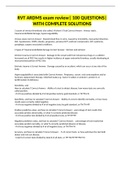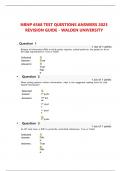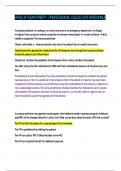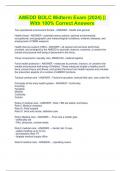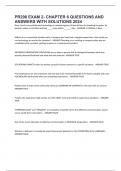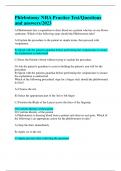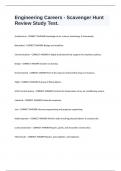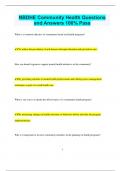Examen
RVT ARDMS exam review| 100 QUESTIONS| WITH COMPLETE SOLUTIONS
- Grado
- Institución
3 causes of venous thrombosis also called, Virchow's Triad Correct Answer: Venous stasis, trauma/endothelial damage, hypercoagulability Venous stasis Correct Answer: Slowed blood flow in veins. Caused by immobility, myocardial infarction, CHF, hypotension, COPD, obesity, pregnancy, previous DV...
[Mostrar más]
